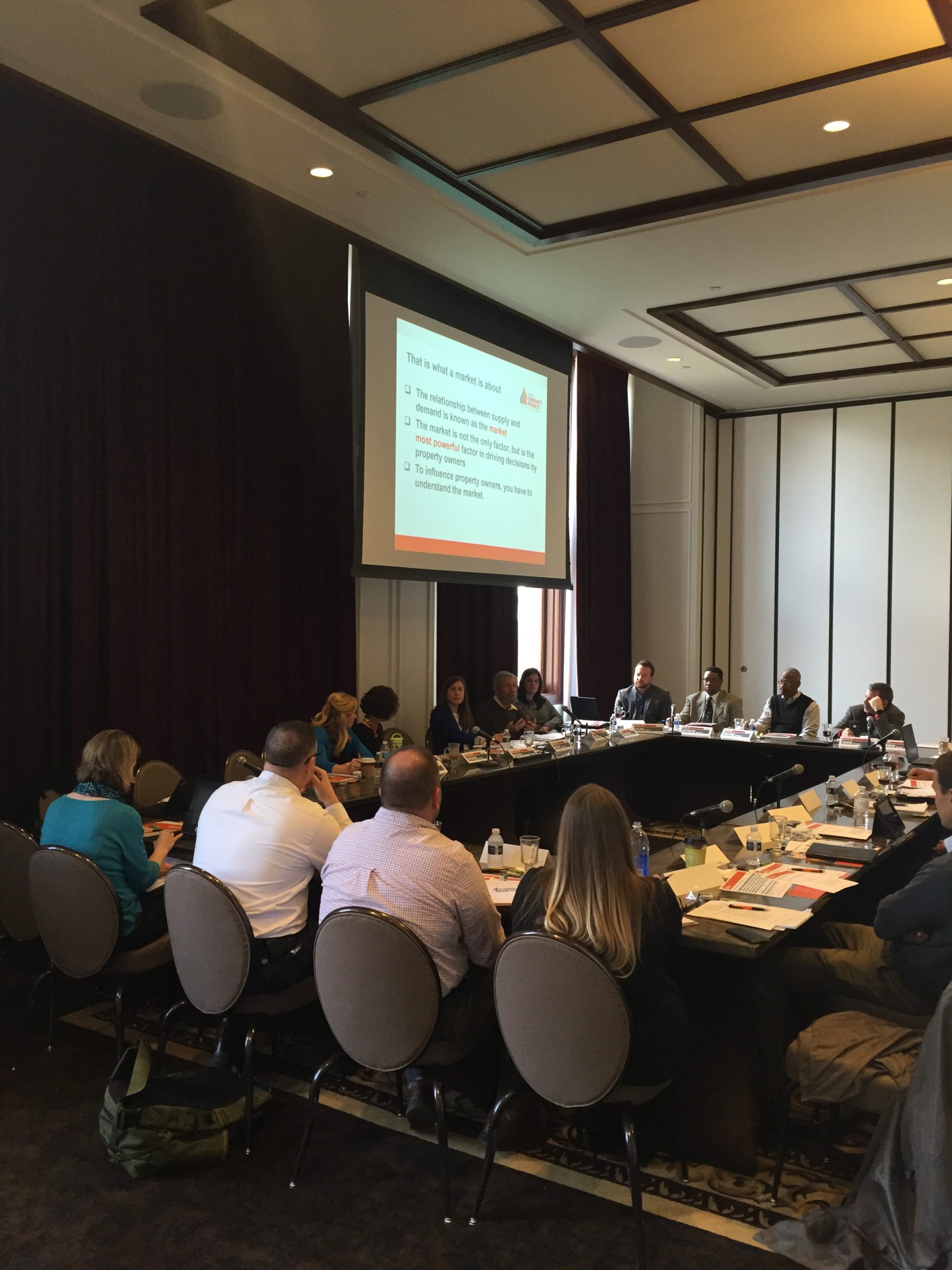Topic(s): Code Enforcement System
Communities aim to stabilize neighborhoods through effective rental registration and certification programs
June 21, 2016


Homes in Detroit (Credit: Luke Telander for Community Progress, 2014)
Code enforcement is an important tool for addressing blighted property conditions and stabilizing neighborhoods. When we talk about that, however, we often focus on vacant, blighted property, and less so on occupied, blighted property. Many City and land bank-led initiatives have programs to demolish and rehab vacant, abandoned properties, and encourage new residents to move into them. Less attention is paid to another growing inventory of problem properties: substandard rental housing.
Rental housing has increased in many communities across the country. It often accounts for more than half of a city’s housing stock. The mortgage foreclosure crisis and economic downturn led to many homeowners losing their homes and financial institutions tightening loan restrictions, making access to capital particularly challenging. As many struggled to purchase a home, other residents struggled to sell their homes and resorted to renting out the property.
Rising investor activity in distressed markets also led many tax-foreclosed and bank-owned properties to convert from owner-occupied to renter-occupied. Left unregulated, both the irresponsible owners deliberately seeking to maximize short-term profit at the expense of keeping these rental properties well maintained and safe, as well as the less-experienced rental property owners who may not fully understand all of the safety precautions and proper maintenance required for their units, contribute to the deterioration of rental housing. As a result, this growing inventory of rental housing can serve as a major blighting effect in our neighborhoods, dragging down property values and quality of life for everyone—not least of whom are the tenants who may have few other options for affordable housing.
Cities should create processes and a regulatory framework that help ensure rental units are safe for tenants and that rental properties do not negatively impact the neighborhoods in which they’re located. Addressing occupied rental housing can be challenging. All interventions must be carefully executed to avoid causing displacement of tenants and future housing vacancy, while at the same time ensuring quality, safe housing.
Many communities across the country have implemented, or are exploring the creation of, a rental registration and certification program (also known as “rental licensing” in many states).

Learning exchange (Credit: Danielle Lewinski for Community Progress)
In April a group of such communities participated in Community Progress’ learning exchange on the topic of rental registration and certification programs, held in Detroit, Michigan. The event brought together housing and code enforcement department officials from seven Michigan communities, as well as local leaders from New Orleans, Milwaukee, and Minneapolis to share the successes and challenges of their efforts to address substandard rental housing. Led by Community Progress staff, participants had the opportunity to learn from rental program models in Milwaukee and Minneapolis, and exchange program and policy ideas with other Michigan cities that have implemented rental registration and certification programs.
Attendees discussed the key actions needed to establish and manage a successful program, some of which are shared below:
– Understand how the health of your housing markets impacts the behavior of landlords. For example, how much are landlords willing to invest in property maintenance and how they will respond to City regulations and programs when operating in a weak market compared to a stronger one.
– Develop strategies for identifying and registering rental property owners. For example, most participating cities had posted the status of rental registration and certification for individual properties on their websites to help residents and would-be tenants identify which rental properties in their neighborhood are not yet in compliance. Some offered online registration to make the process easy for landlords, or provided an easy reporting mechanism for residents to notify the City of noncompliance. These and other outreach efforts all helped to increase the number of rental property owners in each City’s registration database.
– Establish strong rental data collection, management, and tracking practices for a more efficient, results-driven program. Minneapolis stressed the importance of prioritizing data collection and management in order to be strategic in its interventions and to monitor progress toward compliance. Other cities highlighted the importance of having their rental databases integrated with reliable and up-to-date tax assessor and register of deeds data in order to effectively manage their program.
– Prioritize outreach and education to ensure landlords, tenants, and residents understand their rights, responsibilities, and how to work with the City to ensure compliance. Effective outreach and education can go a long way toward boosting compliance rates. Participants discussed how outreach and training opportunities helped to increase the number of landlords in compliance before the city needed to take a punitive approach.
– Learning how “carrots” in addition to “sticks” can encourage compliance from rental property owners and establish a stronger pool of responsible landlords in your community. Cities discussed offering rental rehabilitation funds, discounts on inspection fees, free rental housing advertisement and other strategies to reward landlords who act as good stewards of their properties. Cities could then reserve ticketing, fines, and other “sticks” for cases in which the “carrots” don’t result in compliance.
– Implement a performance-based model to reward responsible landlords, combining incentives with longer inspection cycles for high performing landlords. The majority of communities – such as Kalamazoo, Grand Rapids, and Minneapolis – participating in the learning exchange had already implemented performance-based inspection cycles, in which high-performing rental property owners are inspected on a less frequent basis than poor-performing landlords. This approach has helped the cities to concentrate limited resources on the most challenging cases, while also offering an incentive to landlords to comply.
For more on establishing a successful rental registration and certification program, and an introduction to a number of national good practice examples, read Community Progress’ 2015 guide for local government officials, “Raising the Bar: Linking Landlord Incentives and Regulation Through Rental Licensing.”
Subscribe to join 14,000 community development leaders getting the latest resources from top experts on vacant property revitalization.
